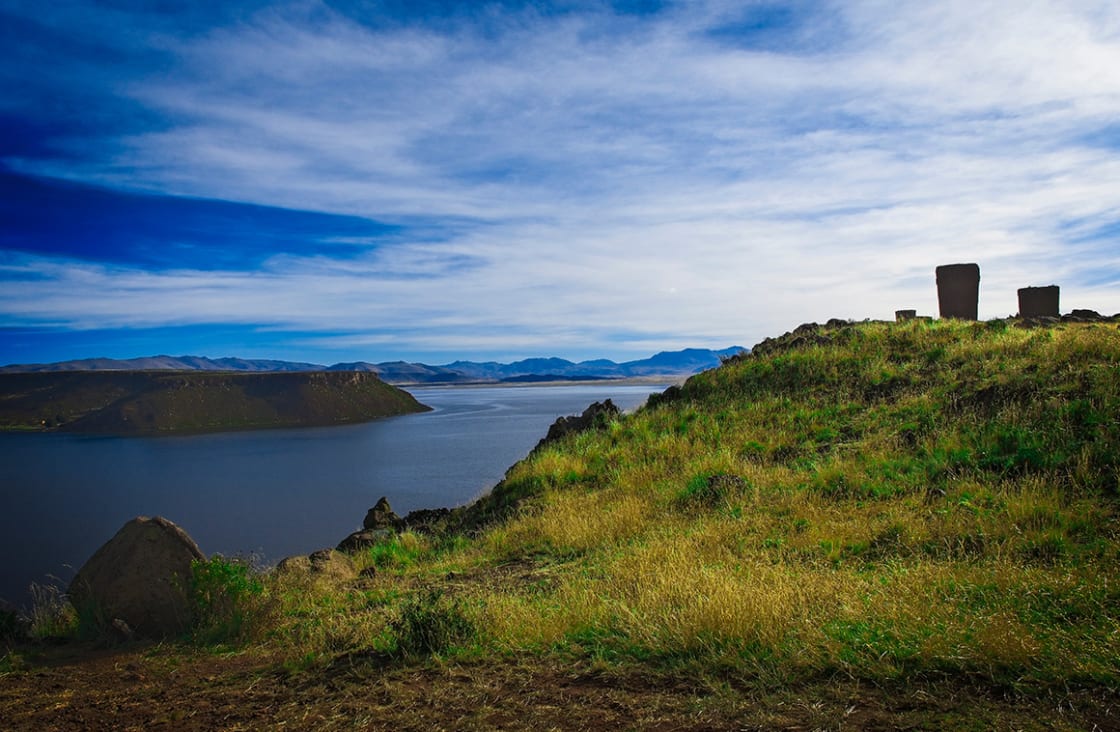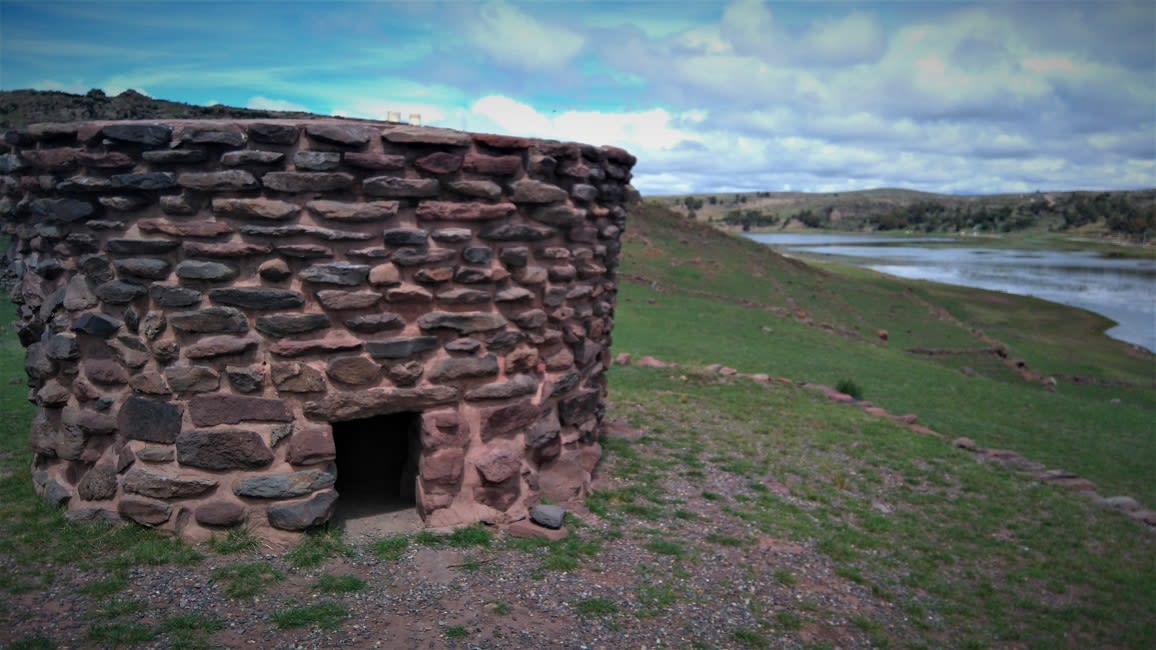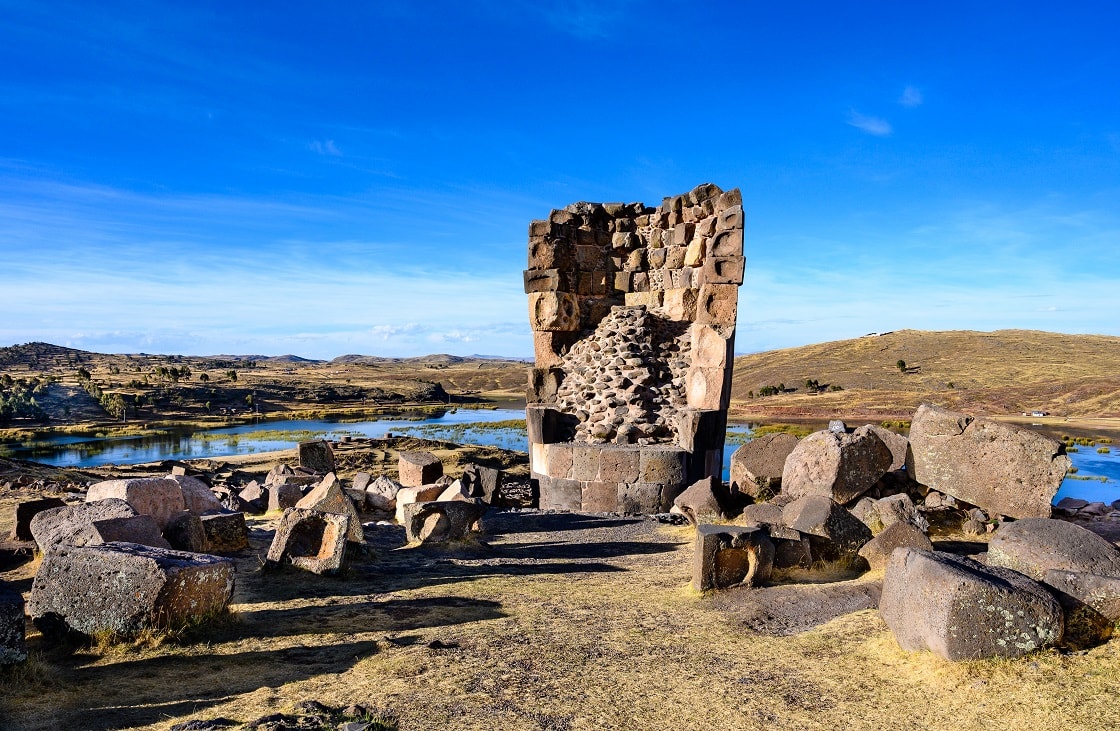
The Sillustani ruins are an above ground Pre-Incan burial site situated around the beautiful Lake Umayo, located in the Lake Titicaca region, approximately 30 kilometres northeast of Puno. While Sillustani is lesser known than many of the more famous Inca sites, venture off the beaten track and you’ll be rewarded with one of the finest examples of ancient Peruvian archaeology in existence, and all of it set against a gorgeous Altiplano backdrop.
Here’s some background on the fascinating Sillustani Ruins and what you can expect upon visiting them.

Pre-Incan Burial Ground On The Shores Of Umayo Lake
The Sillustani ruins are pre-Inca constructions built by the Colla people, an indigenous Aymara-speaking tribe who dominated the Titicaca region before being conquered by the Inca in the 15th century. The site consists of numerous stone funerary towers known as chullpas. Whilst these can be found scattered throughout the wider south Central Andes region, they are the most impressive and well-preserved at Sillustani.
The towers – cylindrical in shape and reaching heights of up to 12 meters – are considered significantly more complex than any subsequent Inca constructions. For example, the Colla carved blocks with even rectangular edges, whilst the Incas built their structures using stones of varying shapes. Inspect some of the blocks carefully, and you’ll make out decorative elements such as lizards and other animal shapes which have been intricately carved into the stonework.
The Colla people built these formations to house their ancestors, who they buried along with plenty of food, fine jewelry and other treasures to see them through the afterlife. The height and grandeur of the tombs served as a potent status symbol for the deceased within, and in practice it is thought that they were reserved for only the very noblest of families. The burial remains have long since decomposed, and the associated riches looted by grave robbers, but the external structures remain intact and cast a truly striking impression.
In addition to the towers themselves, other points of archaeological interest include remnants of huge carved stone blocks which are scattered about the site, evidence of a makeshift quarry, as well as a ramp used to raise the blocks which you’ll find still positioned against one unfinished tower.

Inside Of A Chullpa
There are numerous other memorable attractions that makes Sillustani a destination well worth visiting.
The location itself and surrounding landscape, dominated by the sparkling Laguna Umayo, possess considerable beauty. The lake is venerated by local people and home to a plethora of flora, animal and bird life, including flamingos, Andean geese, vicuñas (a rare and endangered relative of llamas), as well as wild guinea pigs.
On route to the burial site, you’ll also pass several small traditional settlements where you can buy and sample local food, ranging from boiled potatoes to cheese and even arcilla, a type of edible clay.

While chullpas are not unique to Sillustani and are found across the Altiplano, this site is considered the best and most preserved example of them
From Puno, most tours offer half-day excursions to Sillustani, departing in the early afternoon around 2:00 pm. The round trip takes roughly 3.5 hours, and you’ll typically have a good hour and a half to explore the site.
If you want more flexibility regarding your departure time, there’s the option to hire a private taxi, which will cost around S/.200 for 2 hours at the site. Travelers on a budget may want to consider taking the bus to Juliaca for only S/.3.50, followed by a short onward combi ride (S/.3) to the ruins. If you want to spend longer in the area, the traditional community of Atuncolla offers homestays for tourists interested in hiking, discovering lesser-known archaeological sites and spending time learning about farming and the lifestyle of local host families.
The optimal time to visit Sillustani is in the late afternoon, when the sun casts the best light for photography, and when most of the tour operators schedule visits. However, you may want to organize a trip earlier in the day when the site will be a lot less busy. If you’re an early riser, a visit at sunrise only adds to the beauty and mystique of the place. And for animal lovers, early morning is also when the wild guinea pigs are most active.
A trip to see Puno’s Sillustani ruins is well worth it if you are in the Titicaca area. Surely one of the best-preserved and most impressive archaeological sites of ancient Peru, a visit can easily be combined with numerous other activities and tours in the region and further afield.
While Rainforest Cruises aim to provide accurate and up-to-date information, we make no representations as to the accuracy or completeness of any information herein or found by following any link on this site. Rainforest Cruises cannot and will not accept responsibility for any omissions or inaccuracies, or for any consequences arising therefrom, including any losses, injuries, or damages resulting from the display or use of this information.




